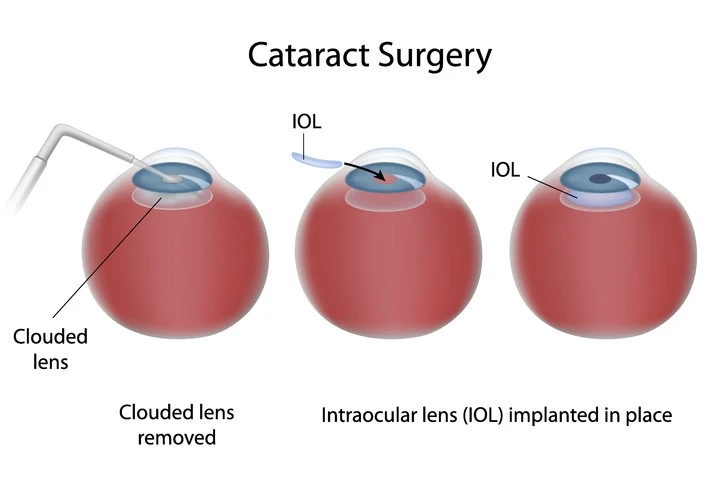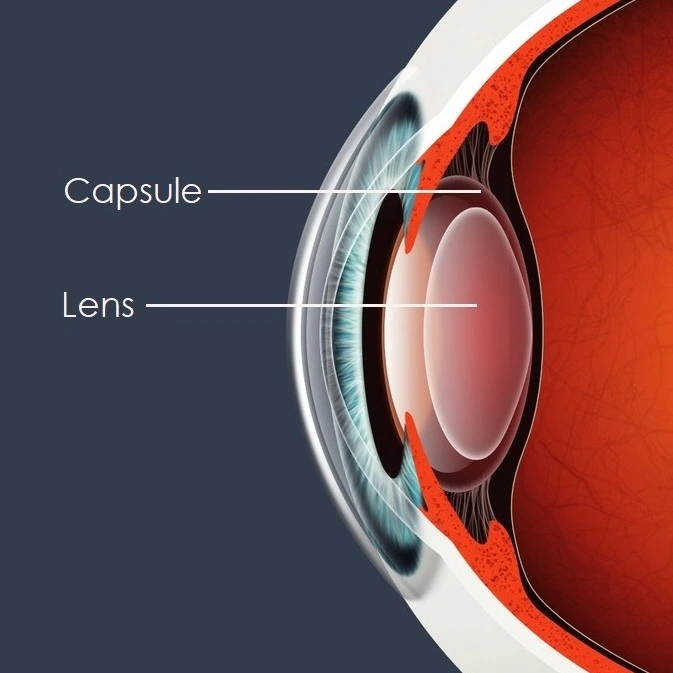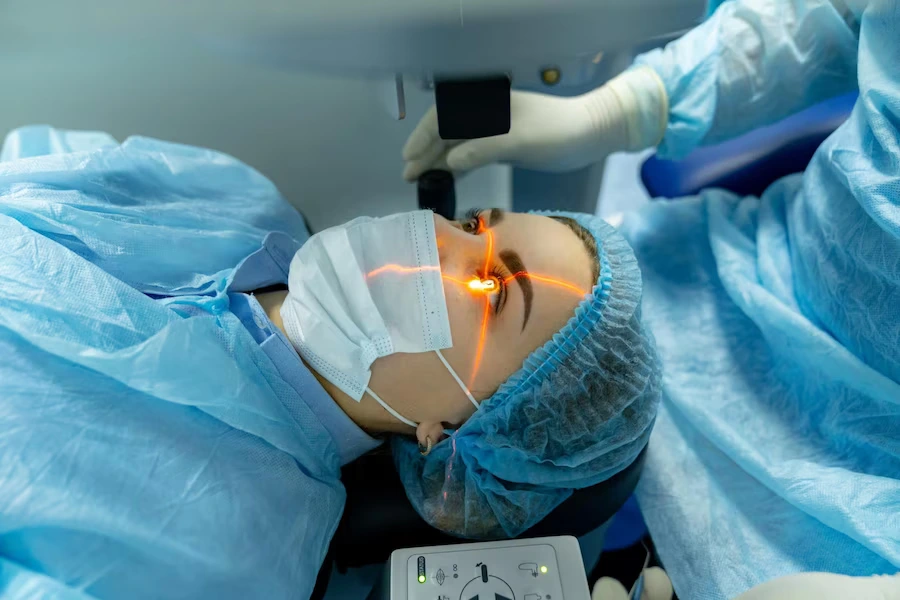Cataracts making you see the world through a foggy window?
Don't worry, you're not alone! It's pretty common, especially as we get older. But luckily, there's a fix: CATARACT SURGERY.
It's basically like swapping out a cloudy lightbulb for a bright new one, and thanks to modern technology, it's usually a quick and safe procedure.
So, what's the deal with cataracts? They're clouding over your eye's natural lens, which helps focus light like a camera. This cloudiness makes things blurry, like reading a book through a dusty window. Cataract surgery removes the cloudy lens and replaces it with a fancy little device called an intraocular lens (IOL).
Think of it as a brand-new, crystal-clear lightbulb for your eye!

VISUAL REPRESENTATIVE DIAGRAM - CATARACT SURGERY
What is an Intraocular Lens and How Does It Help my Vision?
An intraocular lens (IOL) is a tiny, clear, artificial lens that's implanted in your eye during cataract surgery. It takes over the job of your natural lens, which becomes cloudy with cataracts and makes your vision blurry. Think of it like swapping out a cloudy window pane for a sparkling new one!
Here's how an IOL helps your vision:
Replaces the cloudy lens: Your natural lens sits inside your eye and focuses light onto your retina (the light-sensitive part at the back). When it gets a cataract, it becomes cloudy and blocks light, making everything blurry.
Focuses light for clear vision: Just like your natural lens, an IOL focuses light rays onto your retina, but its advantage is crystal clear! This allows you to see things sharply again, without the haze or blurriness caused by cataracts.
Comes in different types: Not all IOLs are created equal! There are different types to suit your needs:
Monofocal: It focuses either on distance vision (seeing far away) or near vision (seeing up close). You might still need glasses for the other distance, but your overall vision will be much clearer
Multifocal: Like having built-in bifocals, these IOLs have zones for both near and far vision, giving you sharper vision at all distances without glasses.
Toric: If you have astigmatism (blurry vision at all distances), This IOL is your friend. It corrects astigmatism and nearsightedness or farsightedness, giving you sharper, distortion-free vision.
The best IOL for you: An eye care specialist in New York will tell you about your lifestyle and vision needs to recommend the best IOL type for you. They'll consider what activities you enjoy and what annoys you most about your blurry vision.
Why is Laser Treatment Needed Following Cataract Surgery?
While cataract surgery usually does the trick in restoring clear vision, sometimes a YAG laser capsulotomy might be helpful which is a follow-up procedure.
Here's why:
The cloudy culprit: After removing your cloudy natural lens during cataract surgery, it's replaced with an artificial one called an IOL. But here's the thing: a thin membrane called the posterior capsule remains behind the IOL. In some cases, this capsule can become cloudy over time, a condition called posterior capsule opacification (PCO).
Vision blurred again: If PCO happens, it's like a dusty film covering your new, clear IOL. This can cause your vision to become blurry or hazy again, similar to having a cataract, even though your IOL is still perfectly fine.
Laser to the rescue: This is where YAG laser capsulotomy comes in. It's a quick and painless outpatient procedure that uses a focused laser beam to create a tiny, clear opening in the cloudy capsule. This allows light to pass through normally again, restoring your vision.
Not everyone needs it: The good news is, that PCO doesn't happen to everyone who has cataract surgery. Only about 20% of people experience it. If you do, it usually develops months or even years after surgery.
Signs to watch for: Talk to Elite Eye Care, the best eye care clinic in New York, if you notice your vision becoming blurry or cloudy again after cataract surgery, especially with increased glare or halos around lights. A team of eye care specialists can check for PCO and recommend YAG laser capsulotomy if needed.
A quick fix for long-term clarity: YAG laser capsulotomy is a simple and effective procedure that takes less than 10 minutes and usually requires no anesthesia. Most people see their vision improve significantly within a day or two.

So, remember: YAG laser capsulotomy isn't a regular part of cataract surgery, but it's a powerful tool to keep your vision clear if that pesky PCO tries to cloud things up again. If you have any concerns, don't hesitate to contact Elite Eye Care!
The bottom line
Dr. Yakubov and the team at Elite Eye Care encourage you to make minor changes to recover your eyesight.
Remember, knowledge is power, and with it, you can confidently step into a world of newfound focus and visual delight.
So, let go of the blurry fog and embrace the promise of a brighter tomorrow.

